Ayush Suraksha Portal
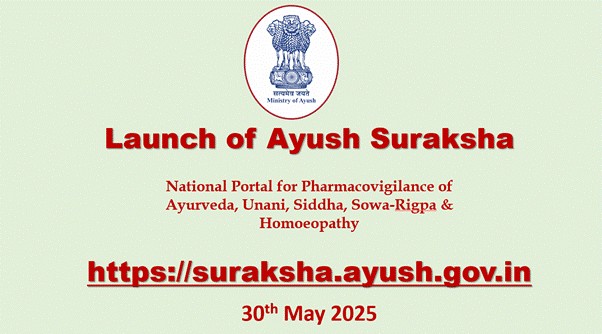
- 31 May 2025
In News:
The Ayush Suraksha Portal was launched in May 2025 by the Union Minister of State (Independent Charge) for Ayush, in compliance with the Supreme Court's directive. The portal marks a major step in enhancing regulatory oversight, public safety, and pharmacovigilance within the Ayush sector.
Objective
The portal aims to:
- Monitor and act on misleading advertisements.
- Track and respond to adverse drug reactions (ADRs).
- Promote transparency, accountability, and public participation in the regulation of traditional medicine systems.
Key Features
- Centralised digital platform for real-time reporting and analysis of misleading advertisements and ADRs.
- Accessible to the general public, healthcare professionals, and regulatory authorities.
- Ensures direct citizen participation by allowing users to report issues and track action taken.
- Developed with technical support from the Central Council for Research in Siddha (CCRS).
- Integrated with the National Pharmacovigilance Program for Ayush.
Institutional Integration
The portal coordinates with multiple regulatory and enforcement bodies:
- Ayush vertical under CDSCO
- Ministry of Information & Broadcasting (MoI&B)
- Central Consumer Protection Authority (CCPA)
- National Commission for Indian System of Medicine (NCISM)
- National Commission for Homoeopathy (NCH)
- Pharmacy Council of India (PCI)
- Food Safety and Standards Authority of India (FSSAI)
- State Licensing Authorities (SLAs)
Significance
- Meets the Supreme Court’s deadline ahead of time, reinforcing legal compliance.
- Enables real-time regulatory action, inter-state coordination, and data-driven governance.
- Enhances public trust and safety in the use of traditional medicines.
- Reflects the Ministry of Ayush’s commitment to evidence-based practices and responsible governance.
National Florence Nightingale Award 2025
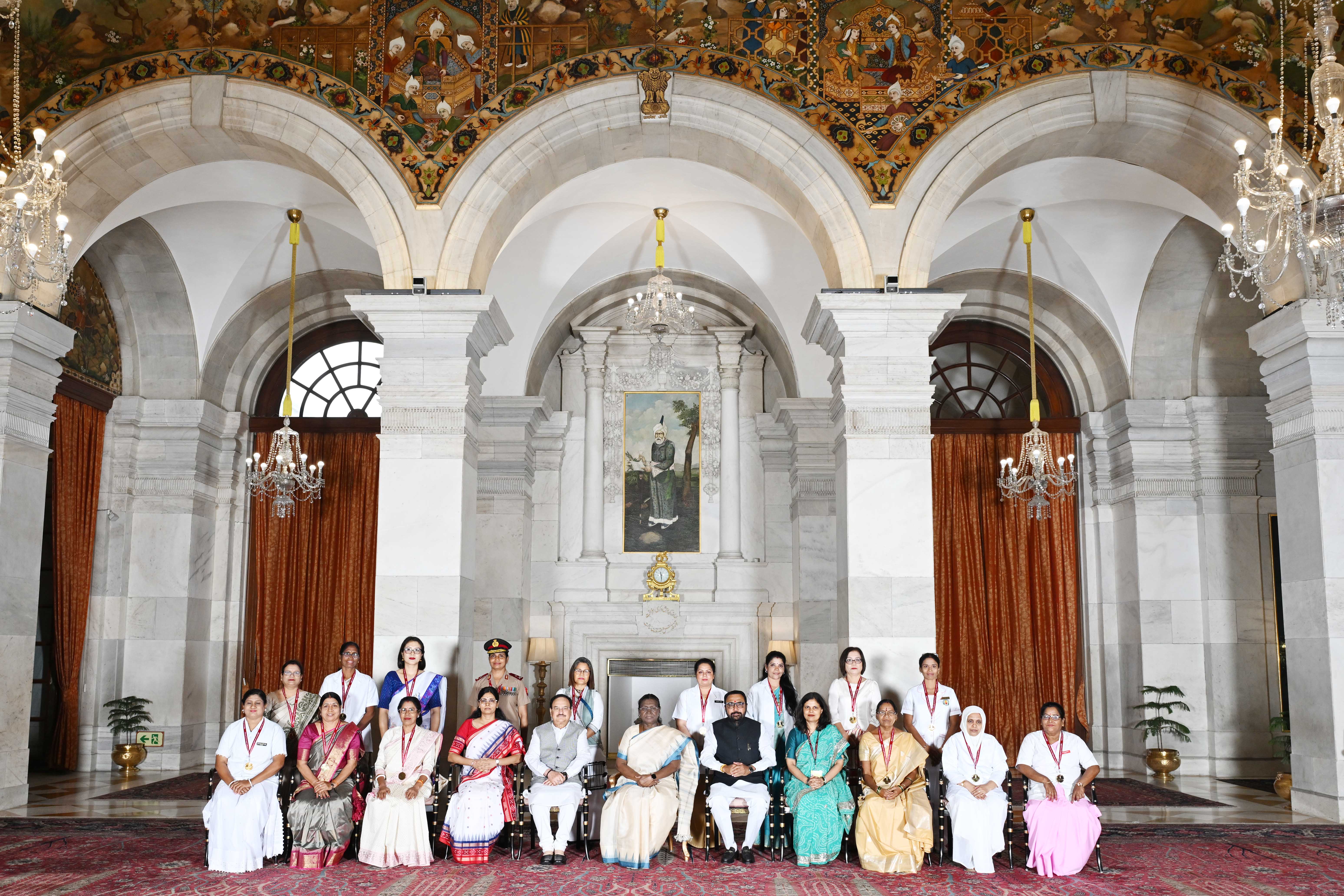
- 31 May 2025
In News:
The President of India recently conferred the National Florence Nightingale Awards 2025 to exemplary nursing professionals in a formal ceremony held at Rashtrapati Bhavan.
About the National Florence Nightingale Awards
- Established: 1973
- Administered by: Ministry of Health and Family Welfare, Government of India
- Purpose: To honour exceptional contributions of nursing personnel across India in recognition of their meritorious service to society.
The award is open to nurses working in government, private, and voluntary healthcare settings, including hospitals, community health centres, educational institutions, and administrative roles.
Award Components
- Certificate of Merit
- Cash Prize: ?1,00,000
- Medal of Honour
About Florence Nightingale
- Florence Nightingale (1820–1910) was a pioneering English nurse, social reformer, and statistician, widely considered the founder of modern nursing.
- She gained recognition during the Crimean War for organizing the care of wounded soldiers in Constantinople (now Istanbul).
She also revolutionized nursing education by establishing the Nightingale School of Nursing at St. Thomas’ Hospital, London, the first institution based on scientific nursing principles.
Ahilyabai Holkar
- 31 May 2025
In News:
On the 300th birth anniversary of Maharani Ahilyabai Holkar, the Prime Minister will participate in the Mahila Sashaktikaran Maha Sammelan in Bhopal to honour her enduring legacy.
Historical Background
- Born: 31 May 1725
- Ruled: Malwa region (1767–1795) as part of the Maratha Confederacy
- Dynasty: Holkar
- Capital: Maheshwar (now in Madhya Pradesh)
Initially serving as a regent, Ahilyabai Holkar became the sovereign ruler after her husband and father-in-law’s deaths. Her rule is widely regarded as the golden age of the Holkar dynasty.
Governance and Administrative Reforms
- Ahilyabai was known for her equitable justice system, exemplified by the sentencing of her own son for a capital crime.
- She abolished discriminatory practices, such as the law confiscating property from childless widows.
- Courts for dispute resolution were established, and she remained accessible to the public, holding daily audiences.
- She broke gender norms by not observing purdah, a rare move for female rulers of the time.
Military Leadership
- Trained under Malhar Rao Holkar, she led her forces in battle.
- Appointed Tukoji Rao Holkar (Malhar Rao’s adopted son) as army commander.
- In 1792, she engaged a French officer, Chevalier Dudrenec, to modernize her army by establishing four battalions.
Cultural and Architectural Contributions
- A patron of literature and arts, she invited scholars like Moropant, Ananta Gandhi, and Khushali Ram to her court.
- Promoted craft and industry, notably founding the Maheshwar textile industry—famous today for Maheshwari sarees.
- Commissioned the construction and restoration of hundreds of Hindu temples and dharamshalas across India.
- Her most iconic act was the renovation of the Kashi Vishwanath Temple in Varanasi in 1780.
- Also contributed to infrastructure development, including roads, wells, forts, and rest houses.
Titles and Recognition
- Referred to as ‘Punyashlok’, meaning one as pure as sacred chants.
- British historian John Keay called her the ‘Philosopher Queen’.
Demise and Succession
Ahilyabai passed away on 13 August 1795 at the age of 70. She was succeeded by Tukoji Rao Holkar, who later abdicated in favour of Jaswant Rao Holkar. Jaswant Rao remained the last Holkar to rule independently until 1804.
Swachh Survekshan Grameen (SSG) 2025
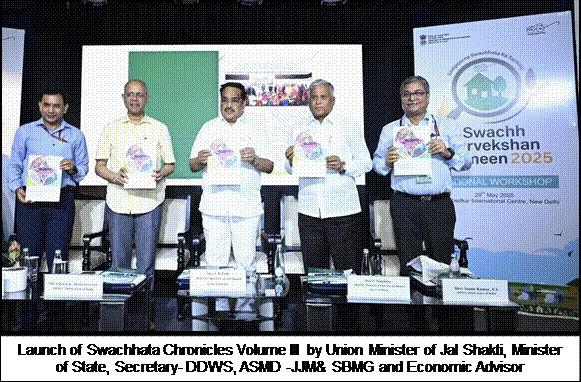
- 31 May 2025
In News:
The Union Minister of Jal Shakti recently launched Swachh Survekshan Grameen (SSG) 2025, India’s largest rural sanitation survey, conducted by the Department of Drinking Water and Sanitation (DDWS) under the Ministry of Jal Shakti.
Objective and Scope:
SSG 2025 is designed to evaluate the impact and sustainability of rural sanitation outcomes achieved under the Swachh Bharat Mission – Gramin (SBM-G) Phase II, particularly focusing on the Open Defecation Free (ODF) Plus Model.
- The survey aims to rank all States, Union Territories, and Districts based on both quantitative and qualitative sanitation indicators.
- 21,000 villages across 761 districts in 34 States/UTs will be covered.
Key Assessment Components:
The evaluation follows a structured framework with four major components:
- Service-Level Progress (SLP): Based on data from district self-assessments and verification of ODF Plus Model villages.
- Direct Observation of Sanitation Status: Field-based observations in sampled villages, households, and public places such as schools and Common Service Centers (CSCs).
- Infrastructure Functionality Check: Includes assessment of:
- Plastic Waste Management Units (PWMUs)
- Faecal Sludge Management (FSM) plants
- GOBARdhan plants
- Swachhata Green Leaf Rating (SGLR) sites
- Citizen Feedback: Collected through a dedicated mobile application and direct interviews, ensuring community participation and transparency.
Key Innovations in SSG 2025:
- Geo-fencing for data authenticity and integrity.
- Emphasis on Jan Bhagidari (public participation) to sustain and validate sanitation achievements.
- Engagement of an independent agency for unbiased survey implementation.
- Launch of Swachhata Chronicles Volume III and a compendium of best practices from States to promote knowledge sharing.
Significance:
- Reinforces India’s commitment to sustainable sanitation and rural development.
- Encourages evidence-based policy interventions and fosters competitive federalism.
- Highlights sanitation as a continuous developmental journey, not a one-time target.
Calotes zolaiking
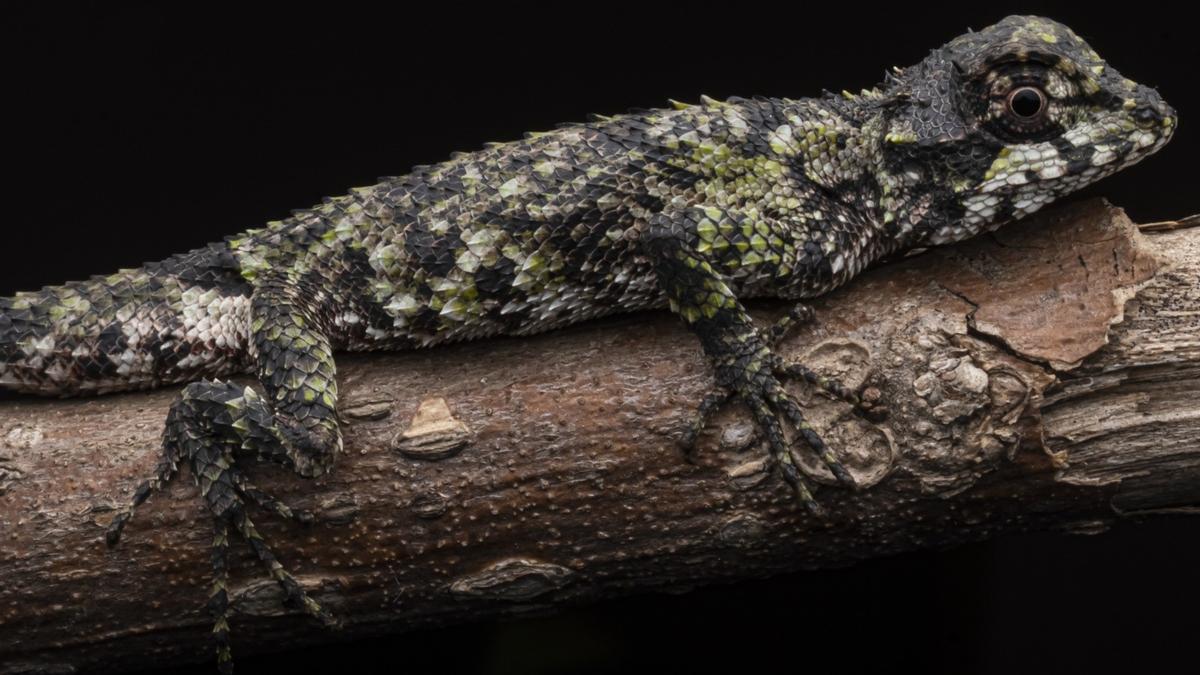
- 31 May 2025
In News:
The rare lizard species Calotes zolaiking has been recorded for the first time in Meghalaya, marking a significant extension of its known habitat and triggering grassroots conservation efforts.
About Calotes zolaiking
- Scientific Classification: Belongs to the Calotes genus under the Agamidae family.
- First Described: In 2019 from Aizawl district, Mizoram.
- Appearance: About 5 inches in length; green body with dark patches and strongly keeled scales (scales with a raised ridge).
- Behaviour: Arboreal (tree-dwelling), diurnal, fast runners, and capable swimmers.
- Diet: Insectivorous—feeds on insects and small invertebrates.
Distribution and Habitat
- New Sighting: Mawmluh village, East Khasi Hills, Meghalaya, April 2024.
- Range Extension: Approx. 172 km aerially from the original Mizoram locality.
- Genus Distribution: Found across India, Sri Lanka, Southeast Asia, and parts of Oceania.
- India's Richness: 14 known Calotes species in India; 9 recorded in the Northeast region.
Conservation Significance
- Community Role: Local residents Goldenstar Thongni and Banyllashisha Wankhar played a key role in identifying and collecting specimens.
- Catalyst for Conservation: The species' discovery has motivated the local community in Mawmluh and Sohra (Cherrapunji) to strengthen forest protection amidst threats from limestone mining and industrial activities.
- Sacred Groves: Traditional conservation spaces like sacred groves are being revitalized in light of the new biodiversity significance.
- Scientific Impact: The find was featured in Zootaxa, a peer-reviewed taxonomy journal, adding global recognition.
Broader Ecological Relevance
- Biodiversity Surveys: The discovery underscores the need for continuous herpetofaunal surveys in the Khasi Hills due to forest degradation.
- Historical Context: Cited alongside Stoliczkia khasiensis, a snake species last seen in 1870, highlighting the risk of species being lost without systematic documentation.
India and the United Nations Peacekeeping
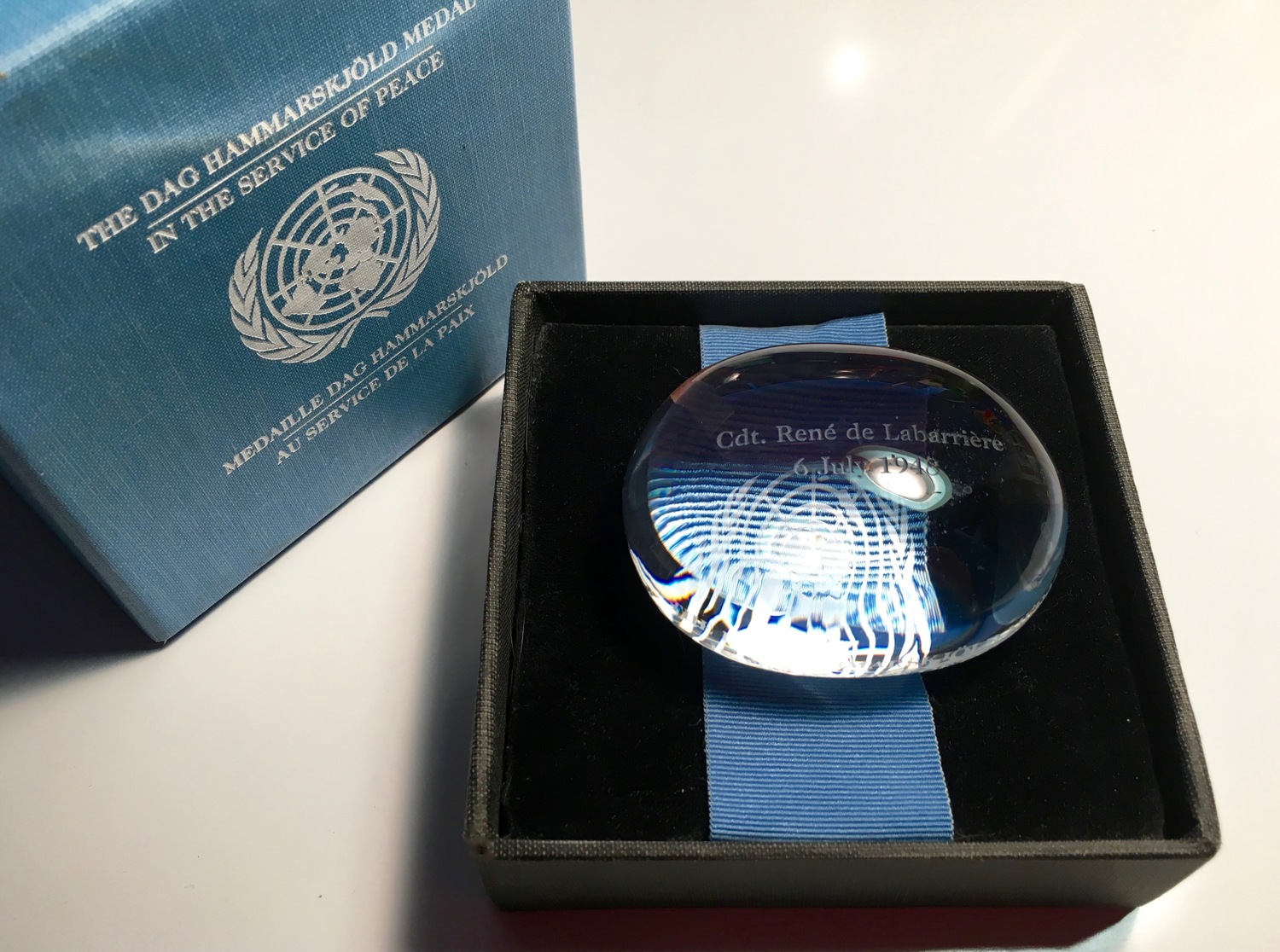
- 30 May 2025
In News:
Two Indian peacekeepers—Brigadier General Amitabh Jha (UNDOF) and Havildar Sanjay Singh (MONUSCO)—are being posthumously awarded the Dag Hammarskjöld Medal by the United Nations. Their sacrifice will be honoured at the U.N. Headquarters during the International Day of U.N. Peacekeepers on May 29, 2025.
Overview:
- Instituted: 1997
- Purpose: Posthumous honour to U.N. peacekeepers who die in service under U.N. authority.
- Awarded on: Peacekeepers' Day (May 29) annually.
- Named after: Dag Hammarskjöld, the 2nd U.N. Secretary-General, who died in a 1961 plane crash during a peace mission in Congo.
- First award (1998): Dag Hammarskjöld and Commandant René de Labarrière (first peacekeeper to die in a U.N. mission, 1948).
Other UN Peacekeeping Awards
- Captain Mbaye Diagne Medal for Exceptional Courage: Recognizes U.N. personnel displaying exceptional bravery.
- UN Military Gender Advocate of the Year Award: Recognizes peacekeepers promoting gender equality under UNSC Resolution 1325.
- 2023 recipient: Major Radhika Sen (India, MONUSCO).
- 2024 recipients: Sqn. Ldr. Sharon Syme (Ghana) and Superintendent Zainab Gbla (Sierra Leone), both serving in UNISFA.
India’s Contribution to UN Peacekeeping
- Total personnel deployed (2025): Over 5,300 Indian troops in missions in: Abyei, Central African Republic, DR Congo, Lebanon, Somalia, South Sudan, and Western Sahara.
- Historical role:
- Since 1950s, India has contributed over 290,000 personnel to 50+ peacekeeping missions.
- India is among the top four contributors of uniformed personnel.
- Engagement includes training, capacity building, and technology support for U.N. missions.
UN Peacekeeping: Global Overview
- Established: 1948 (First mission: United Nations Truce Supervision Organization in the Middle East).
- Cumulative personnel served: Over 2 million in 71 operations.
- Current strength (2025): Around 68,000 personnel from 119 countries in 11 missions across Africa, Asia, Europe, and the Middle East.
- Peacekeepers who have died since 1948: Over 4,400.
Theme 2025: ‘The Future of Peacekeeping’
- Linked to: Pact for the Future adopted in 2024 by global leaders.
- Aim: To reform peacekeeping for modern challenges.
- UN Secretary-General António Guterres emphasized the need for a peacekeeping force ready to face "increasingly complex" global situations.
Stromatolites in India
- 30 May 2025
In News:
600-million-year-old stromatolites in the Himalayas tell the story of an ocean lost and Earth’s first breath.
What are Stromatolites?
Stromatolites are organo-sedimentary structures formed by the entrapment of calcium carbonate precipitates by cyanobacteria (blue-green algae) in shallow marine environments. These layered, dome-shaped mounds represent some of the earliest evidence of life on Earth, with their formation driven by photosynthetic microbial mats.
- Composition: Typically found in limestone, shale, and sandstone.
- Structure: Characterized by laminated layers that may appear flat, dome-shaped, or columnar.
- Habitat (Ancient & Modern): Mostly marine; some ancient forms inhabited freshwater and intertidal zones. Today, living stromatolites survive in limited saline lagoons and bays.
Latest Discovery: Chambaghat, Himachal Pradesh
A major stromatolite outcrop, dating back 600 million years, was recently found in Chambaghat, Solan district, Himachal Pradesh. These structures lie within the Krol Group of sedimentary rocks — a part of the ancient Tethys Sea that existed before the Indian plate collided with Eurasia.
- Elevation: Found at 5,000–6,000 ft above sea level, showcasing tectonic uplift.
- Age Significance: Though not the oldest globally or in India, these are among the younger but well-preserved stromatolites, possibly from the Precambrian-Cambrian boundary (~543–548 million years ago).
Scientific Importance
- Geological Record: Stromatolites document Earth's atmospheric shift from a greenhouse gas-rich to an oxygen-rich environment — a transformation driven by photosynthetic cyanobacteria.
- The Great Oxidation Event (GOE): Occurred ~2.4 billion years ago, when oxygen produced by cyanobacteria began accumulating in the atmosphere, enabling the evolution of multicellular life.
- Tectonic History: Their presence in the Himalayas illustrates the story of the Gondwana supercontinent, India’s northward drift, and the closure of the Tethys Sea.
Global and Indian Context
- Oldest Stromatolites (Global): ~3.6 billion years old from Western Australia.
- Oldest in India: ~2.5 billion years old in the Dharwar Supergroup, Karnataka.
Prominent Stromatolite Sites in India:
Region Geological Feature
Chitrakoot, Uttar Pradesh Columnar stromatolites in Vindhyan limestones
Morni Hills, Haryana Preserved stromatolites in dolomite
Mussoorie & Nainital, Uttarakhand Precambrian marine stromatolites in Krol Belt
Jaisalmer Fossil Park, Rajasthan Protected Mesozoic marine fossil site
Dharwar Supergroup, Karnataka Neoarchean stromatolites (~2.6 billion years old)
Bhima Basin, Karnataka Precambrian stromatolites in shallow marine limestones
Preservation and Geoheritage
Geologists and experts advocate for declaring Chambaghat as a Geoheritage Park, involving local communities and schools to foster awareness. The goal is to integrate science with tourism, conservation, and education.
- Challenge: Many stromatolitic sites across India face neglect or risk from mining and construction, despite their scientific and educational potential.
- Appeal: Proposal for UNESCO Geoheritage status to protect and promote this prehistoric legacy.
Pedicularis rajeshiana
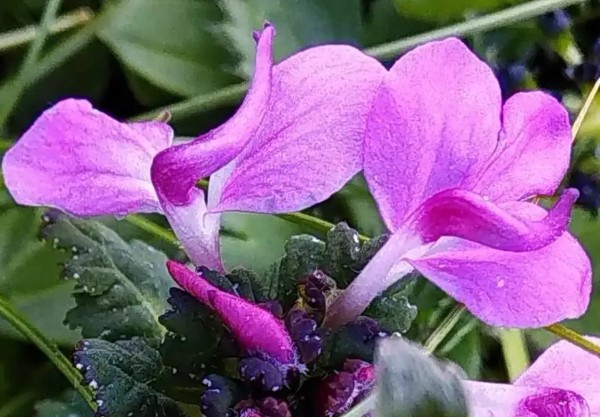
- 30 May 2025
In News:
Researchers from the Botanical Survey of India (BSI), under the Ministry of Environment, Forest and Climate Change (MoEF&CC), have discovered a new plant species — Pedicularis rajeshiana — in the high-altitude regions of Rohtang Pass, Himachal Pradesh.
Key Facts:
Taxonomy and Classification
- Scientific Name: Pedicularis rajeshiana
- Family: Orobanchaceae
- Common Group: Louseworts (Hemiparasitic plants – partially dependent on host plants for nutrients, but also photosynthetic)
- Named by: Botanist Dr. Arti Garg, formerly of BSI Prayagraj, now with BSI Dehradun
- Publication: Officially recorded in the international journal Phytotaxa (Mongolia)
Habitat and Discovery
- Location: Rohtang Pass, Pir Panjal range, Western Himalayas
- Altitude: ~4,390 metres (14,400 feet)
- Habitat: Shaded rocky slopes in scattered patches
- Discovery Project: "Flora of India" initiative by MoEF&CC and BSI
Unique Botanical Characteristics
- Size: Smaller than related species like P. porrecta and P. heydei
- Floral Features:
- Deeply cut lower labium (lip)
- Stamens positioned at three distinct levels inside the flower
- Rare pollen morphology with croton-like surface texture
- Two flowers observed with twin galea (hood-like structures) — a first in the genus, possibly an evolutionary trait to enhance pollination
Ecological Significance
- Endemicity: Many Pedicularis species are habitat-specific and endemic to certain Himalayan regions
- India's Diversity: Home to 83 known species of Pedicularis, with 36 in the western Himalayas
- Conservation Value: The specificity of habitat and rarity suggest potential threat status; conservation is crucial.
India’s First Gene-Edited Sheep
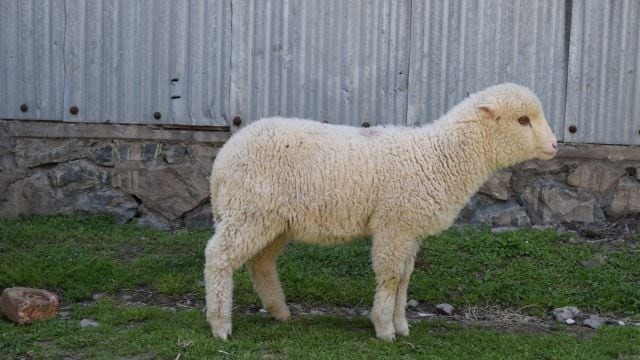
- 30 May 2025
In News:
Sher-e-Kashmir University of Agricultural Sciences and Technology (SKUAST-Kashmir) has successfully developed India’s first gene-edited sheep, marking a significant breakthrough in the field of animal biotechnology.
Key Highlights:
- Institution Involved: Sher-e-Kashmir University of Agricultural Sciences and Technology (SKUAST), Srinagar.
- Technology Used:
- CRISPR-Cas9 gene editing — a precision genome editing tool that won the 2020 Nobel Prize in Chemistry.
- Gene editing was conducted without insertion of foreign DNA, thus the sheep is non-transgenic and differs from traditional GMOs.
- Gene Targeted: The myostatin gene, which regulates muscle growth, was edited to enhance muscle mass.
- Result: Muscle mass increased by 30%, a trait absent in Indian sheep breeds but seen in select European breeds like the Texel.
- Significance:
- Improved meat yield and quality in sheep.
- Potential for disease-resistant and higher-reproduction-rate livestock in the future.
- Supports India’s evolving biotech policy by promoting non-transgenic, gene-edited organisms that are more likely to receive regulatory acceptance.
- Aligns with goals of sustainability and food security by enhancing productivity per animal.
- Regulatory & Safety Aspects:
- Research adhered to international biosafety protocols.
- Sponsored by the Indian Council of Agricultural Research (ICAR).
- Legacy & Research Background:
- Developed after 4 years of dedicated research.
- Led by Prof. Riaz Ahmad Shah, also known for creating India’s first cloned Pashmina goat, Noori, in 2012, and contributing to the world’s first cloned buffalo at NDRI, Karnal.
Implications for the Future:
- Opens doors for precision breeding in livestock to boost India’s animal husbandry sector.
- Strengthens India’s position in advanced genomic research and supports the vision of Atmanirbhar Bharat in biotechnology.
- Awaits comprehensive regulatory framework for gene-edited animals, currently under government consideration.
WMO Climate Forecast 2025–2029
- 30 May 2025
In News:
The World Meteorological Organization (WMO) has released its latest decadal climate forecast (2025–2029), warning of a continued trend of record-breaking global temperatures. This projection raises serious concerns about climate risks, sustainable development, and international climate commitments under the Paris Agreement.
Key Projections:
- Annual Global Temperature Rise: Each year from 2025–2029 is projected to be 1.2°C to 1.9°C above pre-industrial levels (1850–1900).
- Record Heat Likelihood:
- 80% chance that at least one year will surpass 2024, currently the warmest year on record.
- 86% probability that one year will exceed the 1.5°C threshold.
- Five-Year Mean Warming: 70% chance that the 2025–2029 average will be above 1.5°C, a sharp rise from 47% (2024–2028) and 32% (2023–2027).
Note: The Paris Agreement’s 1.5°C limit refers to long-term (20-year) averages, but short-term overshoots are now increasingly probable.
Regional and Thematic Insights:
1. Arctic Amplification: Arctic winters (Nov–Mar) are projected to be 2.4°C warmer than the 1991–2020 average—3.5× faster than the global rate.
2. Sea Ice Decline: Continued sea ice reduction is expected in the Barents Sea, Bering Sea, and Sea of Okhotsk, impacting marine biodiversity and indigenous livelihoods.
3. Precipitation Variability:
- Wetter-than-average conditions likely in:
- Sahel region
- Northern Europe
- Alaska and Northern Siberia
- Drier conditions expected over:
- Amazon Basin
- Parts of South Asia
South Asia may witness generally wet years, though seasonal variability will persist.
Impact and Implications:
- Extreme Weather Events: Increased warming will fuel more intense heatwaves, extreme rainfall, droughts, and floods, stressing both urban systems and agriculture.
- Cryosphere and Ocean Changes:
- Accelerated glacier and sea ice melt will raise sea levels.
- Ocean heating contributes to acidification and marine biodiversity loss.
- Threat to Sustainable Development: Progress on SDGs, particularly food security, water availability, and health, is at risk in vulnerable regions.
Way Forward:
- Revise NDCs at COP30: Strengthen and align Nationally Determined Contributions (NDCs) with the 1.5°C goal.
- Accelerate Clean Energy Transition: Promote renewables, energy efficiency, and net-zero strategies to reduce GHG emissions.
- Adaptation and Resilience: Invest in climate-resilient infrastructure and early warning systems.
- Climate Monitoring & Forecasting: Enhance WMO-led regional forecasts and risk assessment tools.
- Preserve Natural Carbon Sinks: Protect forests, wetlands, and oceans to mitigate atmospheric CO?.
India’s Sharp Decline in Poverty
- 29 May 2025
In News:
Recent Household Consumption Expenditure Surveys (2022–23 and 2023–24) by the National Statistical Office (NSO), alongside a World Bank Poverty & Equity Brief, highlight a historic decline in poverty in India. This achievement is largely attributed to sustained GDP growth and declining inequality.
Key Findings:
Poverty Reduction Trends (2011–12 to 2023–24)
- All-India Poverty Ratio: Fell from 29.5% (2011–12) → 9.5% (2022–23) → 4.9% (2023–24).
- Extreme Poverty (<$2.15/day, PPP): Declined from 16.2% → 2.3% (2011–12 to 2022–23).
- Lower-Middle Income Poverty (<$3.65/day): Declined from 61.8% → 28.1%.
Updated Poverty Lines (Rangarajan Committee Methodology):
Area 2011–12 2022–23 2023–24
Rural ?972 ?1,837 ?1,940
Urban ?1,407 ?2,603 ?2,736
- For a 5-member urban household, the 2023–24 poverty threshold is ?13,680/month.
Factors Driving Poverty Reduction:
- High GDP Growth: Rose from 7.6% (2022–23) to 9.2% (2023–24).
- Moderating Inflation: Consumer Price Index (CPI) inflation dropped from 6.7% to 5.4%, enhancing real incomes. However, food inflation rose to 7.5%, affecting poor households disproportionately.
- Inequality Decline:
- Gini Coefficient fell from 0.310 (2011–12) → 0.282 (2022–23) → 0.253 (2023–24).
- Urban areas saw faster decline in consumption inequality.
Nature and Depth of Poverty:
- Poverty Near the Threshold:
- Over 50% of the poor lie between 75–100% of the poverty line.
- Large share of non-poor lie just above the line (115–125%), making them vulnerable.
- Depth Analysis (Raised Cut-Offs): Even at 125% of the poverty line, poverty fell by 34.2 percentage points (2011–24), showing broad-based gains.
Regional & Structural Challenges:
- Persisting Regional Disparities: States like Bihar, Jharkhand, Odisha still report higher poverty levels.
- Urban Informality & Data Gaps: Recent surveys underrepresent informal workers and migrants, skewing urban poverty estimates.
- Vulnerability to Shocks: Health crises, climate events, or inflation could push the near-poor back into poverty.
- Gaps in Welfare Coverage: Urban poor and migrant populations face limited access to PDS and safety nets.
Policy Imperatives:
- Targeted Cash Transfers: Scale up schemes like PM-GKAY, DBT for LPG, and tailor transfers to those just above the poverty line.
- Strengthen Rural Employment: Enhance MGNREGA funding and integrate climate-resilient jobs.
- Build Urban Safety Nets: Develop a comprehensive urban social protection framework for gig and informal sector workers.
- Education & Nutrition Investments: Bridge human capital gaps via PM POSHAN, Saksham Anganwadi.
- Continuous Poverty Monitoring: Institutionalize annual poverty tracking using real-time and multidimensional indicators.
Menstrual Hygiene in India: Insights from the 2025 Survey

- 29 May 2025
In News:
Menstrual Hygiene Day, observed annually on May 28, raises awareness about safe menstrual practices and their role in ensuring health, dignity, and equality for women and girls. Ahead of the day, the everteen Menstrual Hygiene Survey 2025 has highlighted growing concerns around misinformation, stigma, and access to menstrual products in India.
Key Findings from the Survey:
- Social Media & Misinformation:
- 71.6% of women find social media informative on menstruation.
- However, only 11.5% trust it during emergencies.
- 1 in 4 women reported that misinformation online negatively affected their menstrual health.
- Examples of Misinformation:
- Harmful remedies such as applying menstrual blood for skincare, or drinking coffee/lemonade for cramps.
- Myths like avoiding exercise, temple visits, or not washing hair during periods.
- Misleading claims linking light flow to infertility or tampon use to anatomical changes.
- Menstrual Pain & Remedies:
- 82.7% of respondents experience menstrual pain.
- Only 14.2% use painkillers; 41.5% use no remedy at all.
- Cramps roll-ons used by just 5.5%.
- Menstrual Products Usage:
- 87.8% use sanitary pads (most common).
- Disposable period panties (5.7%) are more popular than menstrual cups (4.7%) or tampons (1.6%).
- 35.4% purchase menstrual products online citing convenience and discounts.
- A significant number of offline buyers report discomfort at physical stores.
- Online Discourse:
- 34% of women shared personal menstrual experiences online.
- Yet, 37.6% feared privacy breaches and 11.4% feared social judgment.
Menstrual Hygiene: Broader Context
- Definition: Safe and hygienic management of menstruation, including the use of clean products, proper disposal, access to sanitation, and health education.
- Global Concern: According to UNICEF, 500 million women globally lack access to adequate menstrual hygiene facilities.
Challenges in India:
- Digital Myths & Stigma: Despite digital access, online spaces are rife with misinformation and taboo-laden content.
- Access Inequality: Significant urban-rural divide in menstrual health services, infrastructure, and product availability.
- Awareness Gaps: Cultural silence and lack of comprehensive health education still persist.
Policy Interventions & Governance:
- Relevant Government Initiatives:
- SUVIDHA Scheme: Affordable biodegradable sanitary napkins at Jan Aushadhi Kendras.
- Swachh Bharat Mission: Incorporates Menstrual Hygiene Management (MHM) into sanitation programs.
- Global Frameworks: Sustainable Development Goal (SDG) 6 – Right to clean water and sanitation, encompassing menstrual hygiene.
Modified Interest Subvention Scheme (MISS) – FY 2025–26
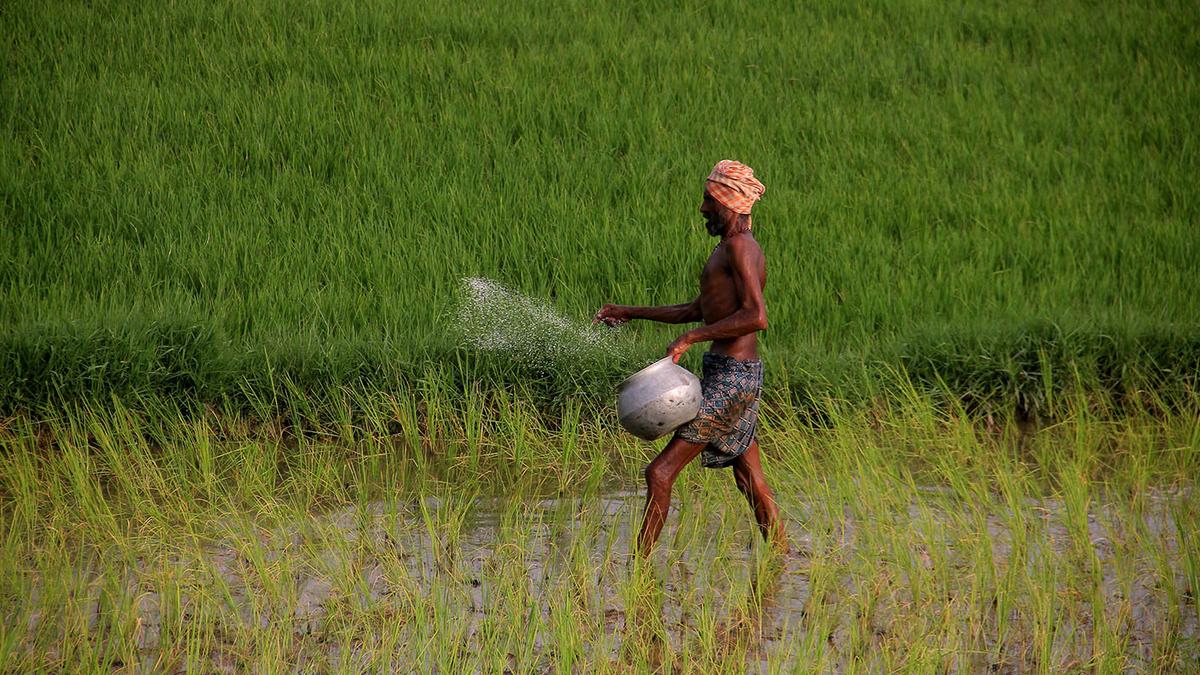
- 29 May 2025
In News:
The Union Cabinet has approved the continuation of the Interest Subvention (IS) component under the Modified Interest Subvention Scheme (MISS) for the financial year 2025–26, retaining the existing structure and interest rates.
About the Scheme:
- Type: Central Sector Scheme
- Objective: To provide short-term agricultural credit to farmers at affordable interest rates through Kisan Credit Cards (KCC).
Key Features:
- Loan Coverage:
- Short-term crop loans up to ?3 lakh per farmer through KCC.
- For loans exclusively for animal husbandry or fisheries, the benefit applies up to ?2 lakh.
- Interest Rates:
- Base interest rate: 7%
- 1.5% interest subvention to lending institutions
- 3% Prompt Repayment Incentive (PRI) for timely repayment
- Effective interest rate for prompt payers: 4%
- Implementing & Monitoring Agencies:
- Reserve Bank of India (RBI)
- National Bank for Agriculture and Rural Development (NABARD)
- Operated via Public Sector Banks, Regional Rural Banks, Cooperative Banks, and Private Banks in rural/semi-urban areas.
Recent Updates and Rationale:
- No structural changes have been introduced in the scheme for FY 2025–26.
- The scheme continues amidst rising lending costs, with stable repo rates and MCLR trends.
- It ensures credit access for small and marginal farmers, critical for financial inclusion and agricultural productivity.
Impact on Agricultural Credit:
- KCC Accounts: Over 7.75 crore active accounts across India.
- Institutional Credit Growth:
- Disbursement via KCC increased from ?4.26 lakh crore (2014) to ?10.05 lakh crore (Dec 2024).
- Total agricultural credit rose from ?7.3 lakh crore (FY 2013–14) to ?25.49 lakh crore (FY 2023–24).
- Digital Reform: Kisan Rin Portal (KRP) launched in August 2023 has improved transparency and efficiency in claim processing.
Significance:
- Helps ensure timely and affordable institutional credit to the farming sector.
- Supports the government's goal of doubling farmers’ income.
- Strengthens the rural credit delivery system and promotes inclusive growth in agriculture.
Madden-Julian Oscillation (MJO)

- 29 May 2025
In News:
In 2025, the early onset of the southwest monsoon in Kerala (May 24) and Mumbai (May 26—the earliest on record) was significantly influenced by the Madden-Julian Oscillation (MJO), as reported by the India Meteorological Department (IMD).
What is the MJO?
- The Madden-Julian Oscillation (MJO) is a large-scale atmospheric phenomenon observed in the tropical belt (30°N to 30°S).
- It is an eastward-moving disturbance involving winds, clouds, pressure, and rainfall that circles the globe every 30 to 60 days (occasionally up to 90 days).
- Identified in 1971 by Roland Madden and Paul Julian, it differs from ENSO (El Niño–Southern Oscillation) in being intra-seasonal and transient.
Phases of MJO:
- Enhanced Convective Phase:
- Associated with increased cloudiness, low pressure, and above-normal rainfall.
- Characterized by rising air and moisture convergence.
- Suppressed Convective Phase:
- Brings clearer skies and reduced rainfall due to subsiding dry air.
- These phases shift eastward and influence weather globally, including India.
Formation and Movement:
- Triggered by surface wind convergence that causes upward motion, cloud formation, and upper-level wind divergence.
- Travels at 4–8 m/s, completing a global circuit roughly every 30–60 days.
MJO’s Impact on Indian Monsoon:
- MJO in active phase over the Indian Ocean can:
- Trigger early monsoon onset, as seen in 2024 and 2025.
- Enhance cyclogenesis and monsoon depressions.
- Improve intra-seasonal rainfall variability.
- May 2025 Event:
- The MJO was in Phase 4 with amplitude >1, indicating strong activity conducive to rainfall.
- This condition, along with favorable local and oceanic factors, supported early monsoon advancement in India.
Global Influence of MJO:
- Cyclone Modulation: Alters frequency and intensity of tropical cyclones.
- Weather Extremes: Affects jet streams, triggering cold surges, heatwaves, or floods in mid-latitudes (e.g., U.S., Europe, Australia).
- Interaction with ENSO: While not always directly linked, MJO can amplify or be influenced by El Niño conditions.
Dark Patterns and India’s Regulatory Response
- 29 May 2025
In News:
The Ministry of Consumer Affairs, Food, and Public Distribution has initiated a robust crackdown on Dark Patterns—deceptive design practices used on digital platforms to manipulate consumer behavior. A recent high-level stakeholder meeting in Delhi, chaired by Union Minister Prahlad Joshi, brought together representatives from major e-commerce platforms like Amazon, Flipkart, Zomato, and Ola, along with consumer organizations and law institutions, to address the growing concern.
What are Dark Patterns?
Dark Patterns are user interface designs that intentionally mislead or coerce consumers into making decisions they would not have otherwise made. These manipulative tactics exploit psychological principles and cognitive biases to serve the commercial interests of platforms—often at the cost of consumer autonomy.
Types of Dark Patterns Identified by the Government:
The Department of Consumer Affairs has officially recognized 13 types of dark patterns in its November 2023 guidelines. Prominent among them are:
- False Urgency: Creating artificial time pressure (e.g., “Only 1 seat left!”).
- Basket Sneaking: Adding items to the cart without user consent.
- Confirm Shaming: Using guilt-driven language to influence decisions.
- Subscription Trap: Making subscription easy but cancellation difficult.
- Interface Interference: Hiding crucial information or options.
- Bait and Switch: Advertising one offer and switching to another.
- Hidden Costs: Revealing extra charges only at checkout.
- Forced Action: Making users complete unrelated tasks to proceed.
- Disguised Ads, Trick Questions, Nagging, SAAS Billing Abuse, and Rogue Malware Links are other examples.
These practices have been found across multiple digital sectors including e-commerce, travel, OTT platforms, edtech, online banking, and quick commerce.
Consumer Impact and Rising Complaints:
The National Consumer Helpline has witnessed a significant increase in grievances related to dark patterns. Platforms are accused of eroding consumer trust, causing financial harm, breaching privacy, and distorting fair market practices.
According to LocalCircles, based on a survey conducted across 392 districts with feedback from 2.30 lakh consumers, the worst offenders include edtech, airline, and taxi app services. Notably, companies like Uber and Rapido were recently issued notices by the Central Consumer Protection Authority (CCPA) for coercing users into paying tips in advance.
Regulatory Measures in India:
- Consumer Protection Act, 2019: While it prohibits unfair trade practices, it lacks explicit provisions targeting dark patterns, making enforcement challenging.
- 2023 Guidelines on Dark Patterns: Released by the Department of Consumer Affairs, these guidelines define deceptive interfaces as violations of consumer rights and misleading advertisements.
- Self-Audit Mandate: E-commerce companies have been instructed to conduct internal audits and eliminate dark patterns from their platforms.
- Proposed Joint Working Group: A mechanism is being considered to increase industry awareness and enforce compliance.
- Voluntary and Legal Enforcement: The government has urged digital firms to integrate the guidelines into internal policies and consumer grievance redressal systems.
Panchayat Advancement Index (PAI) 2.0
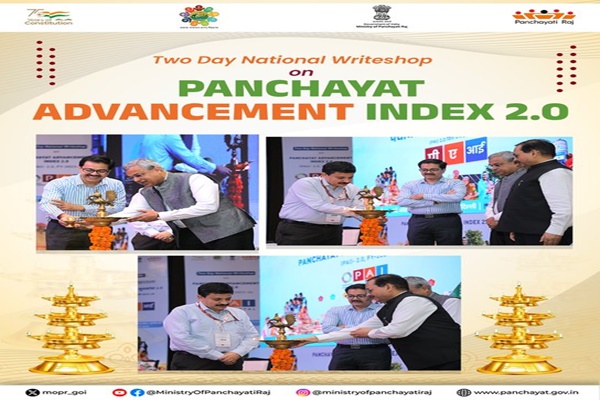
- 28 May 2025
In News:
The Ministry of Panchayati Raj recently held a two-day national write-shop in New Delhi to roll out the Panchayat Advancement Index (PAI) Version 2.0 for the financial year 2023–24. This updated version marks a significant stride toward enabling evidence-based, participatory local governance in India.
What is Panchayat Advancement Index (PAI)?
The PAI is a multi-domain, multi-sectoral index designed to assess the developmental progress, performance, and governance efficiency of Gram Panchayats. It aligns with the Localization of Sustainable Development Goals (LSDGs) and India's broader commitment to the 2030 SDG Agenda.
Key Features of PAI 2.0
- Framework: Based on 435 unique local indicators (331 mandatory, 104 optional), drawn from 566 data points across 9 LSDG themes, aligned with the National Indicator Framework (NIF) of the Ministry of Statistics and Programme Implementation (MoSPI).
- Purpose:
- Measures holistic development and well-being at the grassroots level.
- Helps identify developmental gaps and supports data-driven planning for Panchayats.
- Encourages bottom-up planning and governance.
- Performance Classification:
- Achiever: 90 and above
- Front Runner: 75 to <90
- Performer: 60 to <75
- Aspirant: 40 to <60
- Beginner: Below 40
Evolution from PAI 1.0 to 2.0
- PAI 1.0 established the baseline, covering 2.16 lakh Gram Panchayats across 29 States/UTs.
- PAI 2.0 offers enhanced functionality, efficiency, and user-friendliness, with refined indicators and improved data usability, while maintaining thematic comprehensiveness.
Recent Developments
- Launch of the PAI 2.0 Portal and a comprehensive PAI 2.0 Booklet for FY 2023–24 to guide implementation.
- According to the Ministry, PAI 2.0 now contains over 100 indicators that collectively offer a robust picture of social and economic development at the Panchayat level.
Jinchuanloong niedu
- 28 May 2025
In News:
A newly discovered genus and species of sauropod dinosaur, Jinchuanloong niedu, has been identified from fossil remains found in the Xinhe Formation near Jinchang city in Gansu Province, northwestern China. This discovery adds to the growing diversity of early-diverging sauropods from the Middle Jurassic period, dating back approximately 165 million years.
About Jinchuanloong niedu
- Jinchuanloong niedu belongs to the group Eusauropoda, which comprises early-diverging, strictly herbivorous, long-necked, quadrupedal dinosaurs.
- The fossil specimen includes a nearly complete skull with mandible, five cervical vertebrae, and 29 articulated caudal vertebrae.
- The skull measures approximately 31 cm in length and 12.5 cm in height. Notably, complete skulls are rare in non-neosauropod eusauropods due to their fragile nature.
- The skull is well-preserved, although slightly deformed due to compression. Most cranial sutures remain distinctly visible, aiding paleontological study.
Paleontological Significance
- This species is the earliest sauropod identified from Gansu Province, enriching the diversity of known early-diverging sauropods in East Asia.
- The discovery contributes valuable insights into sauropod evolution in northwest China, particularly during the Middle Jurassic.
- The presence of Jinchuanloong niedu helps trace lineage continuity in the aftermath of a global warming event during the late Early Jurassic, which led to the extinction of other sauropod groups, leaving only eusauropods.
Eusauropoda and Sauropod Evolution
- Sauropods, which existed from the Early Jurassic to the Late Cretaceous, were the largest land animals to have ever lived and were found on all continents.
- Characterized by massive size, long necks and tails, and a herbivorous diet, sauropods include both neosauropods and non-neosauropods.
- During the Middle and Late Jurassic, non-neosauropod eusauropods like Shunosaurus, Omeisaurus, and Mamenchisaurus-like taxa became dominant.
Kumbakonam Vetrilai (Betel Leaf)
- 28 May 2025
In News:
Kumbakonam Vetrilai, a traditional betel (paan) leaf variety cultivated in Tamil Nadu, was recently granted the Geographical Indication (GI) tag by the Government of India. This recognition was published in the Government Gazette in November 2024 and officially announced in April 2025, taking Tamil Nadu’s total GI products to 62.
Geographical and Agricultural Context
Kumbakonam Vetrilai is predominantly grown in the Cauvery river basin in Thanjavur district, covering areas like Kumbakonam, Ayyampettai, Swamimalai, Rajagiri, Thiruvaiyaru, and Papanasam. The region's fertile soil gives the leaves a distinct taste and aroma.
The oblong, heart-shaped leaves, ranging from dark to light green, are known for their pungent flavour and are a staple in South Asian households, used primarily in preparing paan—a post-meal chew with cultural and ceremonial value.
Cultivation and Harvest
The cultivation cycle begins with planting during March–May and August–October. Banana suckers are commonly used to provide shade for the vines. The first leaves, called kolundhu vetrilai, appear 20–25 days after planting.
- Maaruvethalai (1st year harvest): Yields larger leaves with a shelf life of 6–7 days and fetches premium market prices.
- Kelavethalai and Kattavethalai (2nd and 3rd year harvests): Smaller leaves with reduced yield.
The cultivation is labour- and capital-intensive, with most farmers operating on less than one acre. Adverse weather, soil issues, and labour shortages frequently impact profitability.
Cultural and Medicinal Value
Apart from its ritual and culinary use, betel leaf is valued for medicinal properties. Rich in antioxidants and chavicol (an anti-inflammatory compound), it aids digestion and is believed to help manage oxidative stress and diabetes-related conditions.
Economic and Export Potential
The leaves are sold at Rs. 80–180 per 100 leaves and are also exported. However, only about 10 out of 100 days are considered profitable due to market and climatic fluctuations.
GI Tag Benefits and Challenges
The GI tag:
- Confirms the authenticity and regional uniqueness of Kumbakonam Vetrilai.
- Helps curb misuse of the name and ensures only genuine, high-quality products are marketed.
- Boosts export potential and preserves agro-cultural heritage.
Despite this recognition, many farmers and sellers remain unaware of the GI tag. As per Sanjai Gandhi, the IP attorney behind the GI application, there's a pressing need for awareness, capacity-building, and marketing support to help stakeholders leverage the tag effectively.
Efforts are underway through outreach programs and school and college awareness initiatives. This GI tag is also notable as Thanjavur’s first agricultural GI recognition, adding to the region’s rich cultural profile.
National Apprenticeship Promotion and Training Schemes
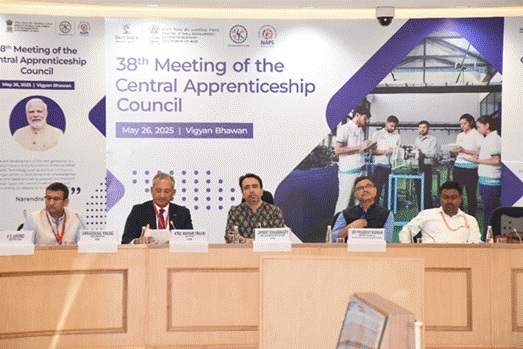
- 28 May 2025
In News:
Recently, the 38th Meeting of the Central Apprenticeship Council (CAC), chaired by the Minister of State (Independent Charge) for the Ministry of Skill Development and Entrepreneurship (MSDE), recommended a 36% increase in stipends under two key skilling initiatives—National Apprenticeship Promotion Scheme (NAPS) and National Apprenticeship Training Scheme (NATS). This move aims to enhance apprenticeship attractiveness, reduce dropout rates, and improve youth employability across India.
About NAPS (Launched: 19 August 2016)
- Objective: To build industry-relevant skilled manpower by promoting on-the-job training and bridging the gap between education and employment.
- Administered by: Ministry of Skill Development and Entrepreneurship (MSDE).
- Key Features:
- Provides financial support to establishments for engaging apprentices.
- Encourages MSME participation and focuses on aspirational districts and the North-East.
- Offers partial stipend reimbursement under the Apprentices Act, 1961.
- Apprentices receive a certificate from NAPS, enhancing employability.
- Over 43.47 lakh apprentices engaged across 36 States/UTs till May 2025.
- Female participation reached 20%, with efforts to boost inclusion.
About NATS
- Target Group: Graduates, Diploma holders, and Vocational certificate holders.
- Provisions:
- Offers 6–12 months of practical, hands-on training.
- Employers receive 50% stipend reimbursement.
- Apprentices are issued a Government of India Certificate of Proficiency, valid across employment exchanges.
- FY 2024–25 Stats: Over 5.23 lakh apprentices enrolled.
Key Reforms Recommended by CAC (2025)
- Stipend Enhancement:
- Proposed increase from ?5,000–?9,000 to ?6,800–?12,300.
- To be adjusted biennially based on Consumer Price Index (CPI).
- Inclusive Skilling Framework:
- Definition of “Person with Benchmark Disability” to be added under the Apprenticeship Rules.
- Trades must indicate suitability for PwBDs with reserved training slots.
- Curricular Integration:
- Push for Degree Apprenticeships and Apprenticeship Embedded Degree Programmes (AEDP).
- Definitions added for "Institution", "UGC", and "Contractual Staff".
- Flexible Training Modes: Employers may provide Basic and Practical Training through online, virtual, or blended modes, adhering to standard curricula.
- Decentralized Administration: Proposal to establish Regional Boards to improve scheme outreach and governance.
- Sectoral Expansion:
- Adoption of NIC Code 2008 to replace outdated 1987 list.
- Brings emerging sectors like IT, software, telecom, biotech, and renewable energy under apprenticeship coverage.
- Operational Improvements:
- Align CTS (Craftsmen Training Scheme) courses with apprenticeship notification timelines.
- Consideration of location-based stipend rationalization based on cost of living.
- Proposal for insurance coverage for apprentices during contract periods.
Governance and Stakeholder Involvement
The Central Apprenticeship Council includes representatives from:
- Ministries: Education, Labour, MSME, Railways, Textiles.
- Industry: BHEL, Indian Oil, Tata, Maruti, Reliance.
- Institutions: NSDC, UGC, AICTE.
- State advisors and domain experts from labour and education fields.
Semi-Transparent Perovskite Solar Cell Technology
- 28 May 2025
In News:
Researchers at IIT Bombay have developed an advanced semi-transparent perovskite solar cell (PSC) layered over a traditional silicon solar cell. This results in a 4-terminal (4T) tandem solar cell that significantly boosts power conversion efficiency (PCE) to ~30%, compared to the current average of ~20% in conventional solar panels.
Key Features and Technology
- Structure: Tandem architecture using a bottom silicon sub-cell and a top layer of indigenously developed halide perovskite semiconductor.
- Material Efficiency: Halide perovskite is one of the most efficient light-absorbing materials and can be locally produced using available chemical resources.
- Cost & Efficiency Gains:
- Potential to reduce solar power cost to ?1/kWh, down from ?2.5–4/kWh.
- Offers 25–30% more efficiency compared to standard solar panels.
- Stability Improvements: Previously, PSCs degraded quickly. The new configuration extends lifespan up to 10 years, enhancing durability under heat and low-light conditions.
Strategic Significance for India
- Indigenous Manufacturing: Reduces dependence on imported raw materials, especially those dominated by China.
- Commercialization Plan:
- Maharashtra government and MAHAGENCO exploring large-scale implementation.
- ART-PV India Pvt. Ltd., a start-up from IIT Bombay's SINE, aims to deliver a commercial wafer-size solution by December 2027 using indigenous equipment.
- Applications:
- Rooftop solar installations
- Building-integrated photovoltaics (BIPV)
- Vehicle-integrated photovoltaics (VIPV)
Clean Energy Linkage: IIT Bombay is also working with the Maharashtra government to develop green hydrogen solutions. The PSC’s high open-circuit voltage makes it suitable for solar-to-hydrogen (STH) applications, offering performance comparable to costly compound semiconductors but at lower cost and with locally accessible materials.
Alicella gigantea
- 27 May 2025
In News:
Rare giant shrimp is more widespread than previously believed; new findings reveal.
About the Species:
- Alicella gigantea is a giant deep-sea amphipod crustacean, growing up to 34 cm in length, making it one of the largest known amphipods.
- Amphipods are shrimp-like organisms; over 10,000 species are known globally, inhabiting a wide range of aquatic environments.
Habitat and Depth Range:
- Inhabits the abyssal (3,000–6,000 m) and hadal zones (>6,000 m) of the ocean.
- Notable sightings include:
- A 28 cm specimen observed at 5,304 m in the North Pacific.
- Captures from 6,746 m depth in the Murray Fracture Zone (North Pacific).
Global Distribution:
- Contrary to earlier beliefs, A. gigantea is not rare but is among the most widely distributed deep-sea species.
- Recent analysis compiled 195 records from 75 locations across the Pacific, Atlantic, and Indian Oceans, covering 15 different seafloor features.
- Found in 59% of the world’s oceans.
- The Pacific Ocean is its most significant habitat, with 75% of the seafloor in its suitable depth range.
Genetic Insights:
- Genetic analyses (16S, COI, 28S genes) show low genetic divergence across populations.
- This suggests A. gigantea represents a single, globally distributed species with strong genetic conservation.
- A shared haplotype network across regions indicates minimal genetic differentiation, supporting global connectivity among populations.
Conservation and Research Significance:
- Despite its wide range, A. gigantea remains poorly understood, particularly in terms of population size, ecology, and evolutionary history.
- Only seven studies have sequenced its DNA to date.
- The findings are a significant step toward understanding deep-sea biodiversity, biogeography, and conservation priorities in abyssal ecosystems.
RBI Dividend Transfer to Government (FY 2024–25)
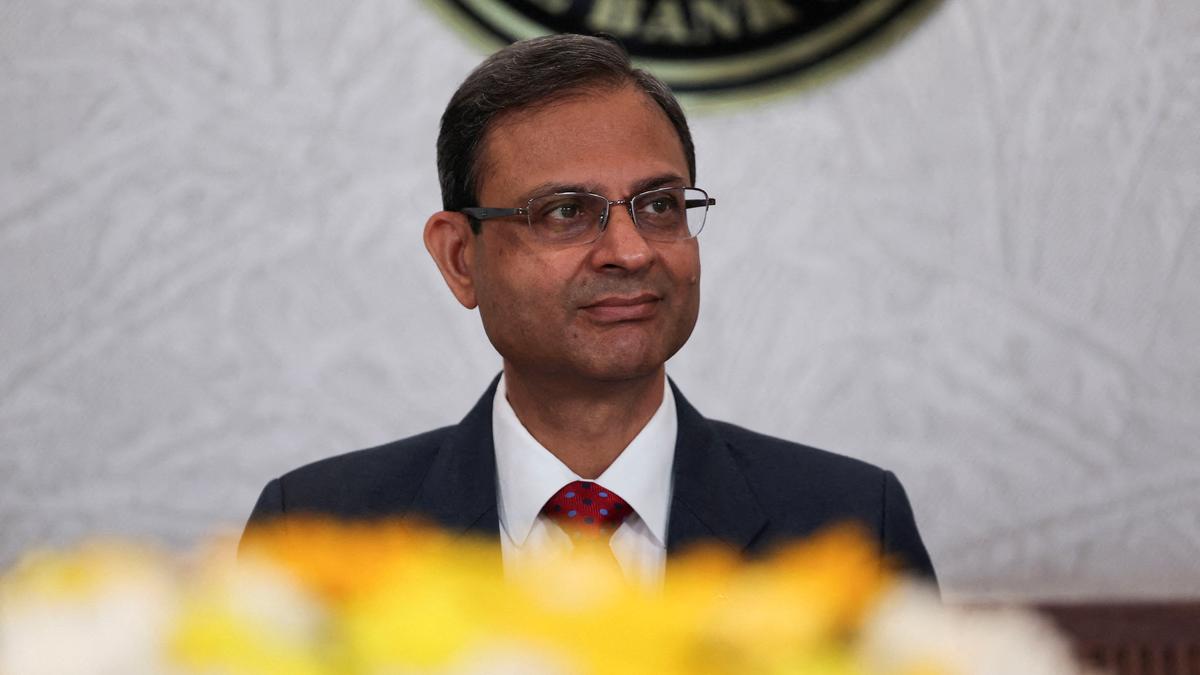
- 27 May 2025
In News:
- The Reserve Bank of India (RBI) has approved a record dividend transfer of ?2.69 lakh crore to the Government of India for FY 2024–25.
- This amount is 27% higher than the ?2.10 lakh crore transferred in the previous year (2023–24).
- The transfer follows the Revised Economic Capital Framework (ECF), approved on May 15, 2025.
What is a Dividend in Public Finance?
- A dividend is the non-tax revenue received by the government as the sole shareholder of the RBI.
- It helps bridge the fiscal deficit.
- RBI dividend distribution is governed by the Reserve Bank of India Act, 1934.
- Unlike corporate dividends that require shareholder approval, RBI transfers are governed by policy mechanisms set by the Central Board.
Economic Capital Framework (ECF) and Risk Buffer
- The Contingent Risk Buffer (CRB) has been raised to 7.5% of the RBI’s balance sheet for FY 2024–25.
- Earlier CRB levels:
- 5.5% (2018–22)
- 6% (2022–23)
- 6.5% (2023–24)
- The CRB helps ensure the RBI maintains sufficient capital to absorb financial shocks.
Reasons for Higher Surplus in 2024–25
- Robust foreign exchange (forex) sales, especially in January 2025, with RBI being the top seller among Asian central banks.
- Increased interest income from government securities and foreign investments.
- Gains from forex transactions during high market volatility.
- Forex reserves had peaked at $704 billion in September 2024, from which large volumes of dollars were sold to stabilise the rupee.
Implications for the Union Budget 2025–26
- The Budget had projected ?2.56 lakh crore as dividend income from RBI and PSUs; the actual RBI dividend itself exceeds this estimate.
- Experts expect the fiscal deficit to reduce by 20 basis points (bps) from the budgeted 4.4% to ~4.2% of GDP.
- The surplus provides a non-tax revenue cushion, helping offset shortfalls in tax or disinvestment receipts and manage additional spending.
Expert Views
- Surplus driven by prudent RBI policy, forex gains, and high interest income. CRB increase reduced the possible surplus, otherwise it could have exceeded ?3.5 lakh crore.
- The surplus equals 0.4–0.5 trillion (?40,000–?50,000 crore) or 11–14 bps of GDP, offering fiscal flexibility.
- Market expected ?3 lakh crore; disappointment due to higher risk buffer provisioning.
Massive Solar Eruption: The ‘Bird-Wing’ Event

- 27 May 2025
In News:
In May 2025, astronomers observed a dramatic solar eruption, dubbed the “Bird-Wing” event, due to its unique wing-like plasma structure. Originating from the Sun’s northern hemisphere, the eruption stretched over 1 million kilometers—more than twice the Earth-Moon distance.
Key Components of the Event
- Solar Flare:
- A sudden, intense burst of electromagnetic radiation caused by magnetic field realignment on the Sun.
- Classified from A to X (increasing order of X-ray brightness).
- Travels at light speed, reaching Earth in about 8 minutes.
- Can disrupt radio communication and GPS systems by affecting the ionosphere.
- Coronal Mass Ejection (CME):
- A massive release of charged solar plasma and magnetic fields into space.
- Travels at 250–3000 km/s, reaching Earth in 18 hours to 3 days.
- Can cause geomagnetic storms, impacting power grids, satellites, navigation, and inducing auroras.
The “Bird-Wing” event involved both phenomena, but Earth narrowly avoided a direct hit, experiencing only a glancing blow. The impact was minimal and did not cause significant technological disruptions.
Associated Geomagnetic Effects
- A filament eruption, distinct from solar flares, was responsible for the minor geomagnetic activity observed. These are cooler plasma structures held by magnetic fields and appear as dark strands on solar imagery. When destabilized, they erupt and emit charged particles.
- Northern Lights (Aurora Borealis) were expected to be visible over parts of the UK, particularly Scotland, as the trailing edge of the CME brushed past Earth.
Space Weather Risks from Solar Storms
According to the European Space Agency (ESA) and NASA:
- Solar flares can disrupt radio signals and satellite communication.
- Solar particles, including high-energy protons, may arrive hours later, posing risks to astronauts and electronics.
- Geomagnetic storms can:
- Disturb Earth's magnetic field.
- Affect power lines, pipelines, and satellites.
- Expand the upper atmosphere, increasing drag on low-orbit satellites, potentially altering their trajectory.
- Temporarily reduce the number of cosmic rays reaching Earth by deflecting them.
Sagarmatha Sambaad 2025
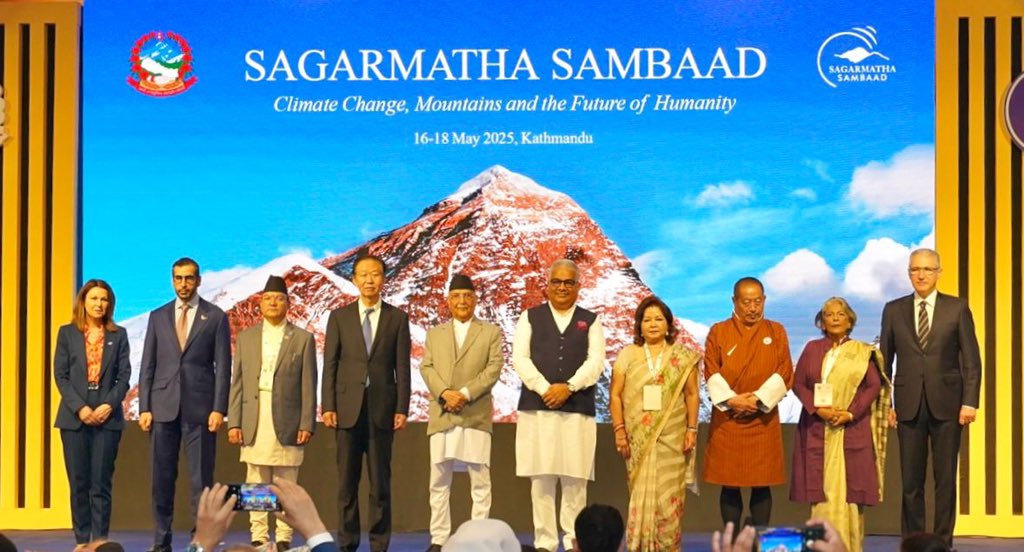
- 27 May 2025
In News:
Union Environment Minister Shri Bhupender Yadav represented India at the 1st Sagarmatha Sambaad in Kathmandu, Nepal, a high-level biennial global dialogue convened under the theme “Climate Change, Mountains, and the Future of Humanity.”
The forum, held during the International Year of Glaciers’ Preservation 2025, focused on mountain ecosystems, climate resilience, and transboundary conservation.
India’s Key Proposals and Commitments
Reaffirmed India’s climate leadership and proposed a five-point call for global action to protect mountain ecosystems:
- Enhanced Scientific Cooperation: Promote joint research on cryospheric changes, biodiversity, and hydrological cycles.
- Building Climate Resilience: Develop early warning systems for Glacial Lake Outburst Floods (GLOFs) and invest in climate-resilient infrastructure in mountainous areas.
- Empowering Mountain Communities: Center policies on local welfare, integrate traditional ecological knowledge, and promote green livelihoods such as eco-tourism.
- Providing Green Finance: Ensure adequate and predictable climate finance for adaptation and mitigation in mountain nations, in line with the Paris Agreement.
- Recognizing Mountain Perspectives: Integrate mountain-specific issues into global climate negotiations and sustainable development agendas.
India’s Initiatives and Regional Cooperation
India highlighted the ecological value of the Himalayas and called for enhanced transboundary conservation among Himalayan nations under the International Big Cats Alliance. This alliance promotes joint protection of species like snow leopards, tigers, and leopards.
- Under Project Snow Leopard, India conducted its first comprehensive snow leopard assessment (2019–2023), recording 718 snow leopards, comprising 10–15% of the global population.
Significance of the Himalayan Ecosystem
- Hydrological Role: The Himalayas are the "Water Towers of Asia", feeding rivers like the Ganga, Brahmaputra, and Indus, and supplying around 1.2 trillion cubic meters of freshwater annually.
- Ecological Richness: A biodiversity hotspot, home to over 10,000 vascular plant species, 979 bird species, and 300 mammals such as the red panda and Himalayan tahr.
- Cultural Importance: Sacred in Hinduism and Buddhism, the Himalayas house pilgrimage sites like Kedarnath, Badrinath, and Mount Kailash.
- Economic Value: Support tourism, agriculture, forestry, and renewable energy. States like Uttarakhand, Assam, and West Bengal derive over 10% of state GDP from tourism.
The Lohit Basin project in Arunachal Pradesh (13,000 MW) exemplifies hydropower potential. - Climate Regulation: The range blocks cold Central Asian winds and influences monsoon patterns, ensuring rainfall for agriculture. Himalayan forests are major carbon sinks, mitigating global warming.
Key Challenges in the Himalayan Region
- Climate Disasters: Rising temperatures and glacier melt cause avalanches, landslides, and cloudbursts. E.g., 2025 Uttarakhand avalanche; 2023 Sikkim GLOF.
- Unsustainable Development: Slope cutting, deforestation, and seismic vulnerability threaten settlements (e.g., Joshimath subsidence linked to infrastructure projects).
- Glacier Retreat:
- Gangotri glacier has retreated over 850 meters in 25 years.
- Hindu Kush glaciers may lose 75% of volume by 2100.
- Biodiversity Loss: Invasive species and habitat loss displace native flora and fauna; 90% of endemic species in Sikkim Himalayas displaced.
- Unregulated Tourism: Littering and plastic waste—92.7% of Himalayan waste is plastic, 72% non-recyclable (2022 audit).
Recommendations for Sustainable Development
- Eco-sensitive Infrastructure: Mandatory Environmental Impact Assessments (EIAs), bioengineering, and electric mobility in high-altitude towns.
- Regulated Tourism: Introduce carrying capacity limits, permit-based entry, and promote low-impact tourism models.
- Glacier Monitoring & Water Management: Use remote sensing and GIS for glacier health; adopt ice stupas, rainwater harvesting, and efficient irrigation.
- Afforestation & Forest Conservation: Launch community-driven forestry projects (e.g., Van Andolan in Uttarakhand) to restore degraded ecosystems.
- Climate Adaptation Strategies: Expand early warning systems for GLOFs; promote climate-resilient crops and agricultural practices.
- Sustainable Livelihoods: Encourage organic farming, herbal industries, and eco-handicrafts to diversify mountain economies.
Bharat Seva Kendra (BSK)
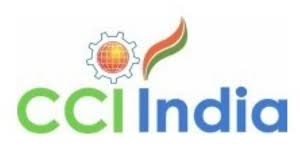
- 27 May 2025
In News:
The Chamber of Commerce and Industry of India (CCI India) has highlighted the role of Bharat Seva Kendra (BSK) in enhancing last-mile service delivery and addressing the urban-rural service gap.
About Bharat Seva Kendra (BSK):
- Launched by: Chamber of Commerce and Industry of India (CCI India).
- Objective: To provide essential government services and welfare benefits directly to rural citizens.
- Nature: A grassroots, nationwide service delivery initiative focused on creating self-reliant rural communities.
Key Features:
- Single-window access to schemes in sectors like healthcare, education, employment, agriculture, financial inclusion, and digital empowerment.
- Digital Inclusion: Modern infrastructure and digital literacy programs to help villagers use e-governance tools effectively.
- Human Network: Backed by a large cadre of 2.5 lakh sarpanches and 6.5 lakh BSK Sarthis, who act as facilitators between government schemes and rural beneficiaries.
- Goal: Reduce bureaucratic delays, enhance transparency, and ensure timely access to welfare schemes.
CCI India’s Role:
- Type: A national-level autonomous business body.
- Functions: Policy advocacy, business facilitation, and supporting domestic and foreign investment.
- Engagement: Represents diverse industries and collaborates with stakeholders including policymakers, industry, and civil society.
Significance for Governance:
- Promotes last-mile delivery of public services.
- Acts as a catalyst for rural digital transformation and inclusive development.
- Enhances administrative efficiency and citizen empowerment in rural India.
Turtle Conservation in Assam’s Temple Ponds

- 26 May 2025
In News:
On World Turtle Day (May 23, 2025), Assam’s Nagshankar Temple was officially declared a model temple for turtle conservation, highlighting the ecological role of temple ponds in preserving India’s turtle biodiversity.
Key Highlights
Nagshankar Temple – A Model for Turtle Conservation
- Location: Sootea town, Biswanath district, ~70 km from Tezpur, Assam.
- Established: Believed to be built in the 4th century AD by King Nagashankar of the Nagakha dynasty.
- Religious Importance: Dedicated to Lord Shiva, but turtles are revered as incarnations of Lord Vishnu.
- Ecological Value: Functions as a micro-wildlife sanctuary — home to 250–300 turtles, along with peacocks, pythons, and deer.
Turtle Conservation Initiatives
Species Conserved:
- Black Softshell Turtle (Nilssonia nigricans) – Critically Endangered
- Indian Softshell Turtle (Nilssonia gangetica)
- Malayan Softshell Turtle
These species thrive in the temple pond, which is fed by the Brahmaputra River basin, offering a suitable natural habitat.
Community & Scientific Collaboration:
- Key Stakeholders:
- Nagshankar Temple Committee
- Turtle Survival Alliance (TSA) India
- Help Earth (NGO)
- Kaziranga National Park & Tiger Reserve
- Assam Forest Department
- Conservation Methods:
- Artificial egg incubation and wild release of hatchlings.
- Dried-fish diet introduced for temple turtles, replacing harmful offerings (e.g., biscuits, puffed rice).
- Capacity-building workshops for forest staff and students to aid in turtle surveys.
Result: 486 hatchlings of the black softshell turtle have been released into the wild from the Nagshankar Temple pond.
Statewide Turtle Conservation Model
- Assam houses ~25 temple ponds actively involved in turtle conservation.
- Notable site: Hayagriva Madhav Temple in Hajo (Kamrup district).
- State Zoo in Guwahati has a dedicated breeding facility (established 2010) for the Assam Roofed Turtle (Pangshura sylhetensis, "Asomi Dura").
Google’s AI Matryoshka Strategy
- 26 May 2025
In News:
At its 2025 I/O Developer Conference, Google unveiled AI Matryoshka, a multi-layered artificial intelligence (AI) ecosystem powered by its latest Gemini 2.5 models. This marks a fundamental restructuring of Google’s platforms around AI, affecting users, developers, and enterprises.
What is AI Matryoshka?
- Concept: Named after the Russian nesting dolls, AI Matryoshka is a layered AI architecture where each outer application or interface draws intelligence from a core AI “brain.”
- Objective: To embed AI deeply and uniformly across Google’s services, enabling agentic, intelligent, and autonomous interactions.
Core AI Models: Gemini 2.5
- Gemini 2.5 Pro:
- Advanced reasoning and mathematics capabilities.
- Achieved high scores on USAMO 2025 (a premier U.S. math olympiad).
- Features a mode called Deep Think for complex problem-solving.
- Gemini 2.5 Flash:
- A more efficient, lightweight model using 20–30% fewer tokens.
- Supports natural audio output and multi-speaker TTS in 24 languages.
- Set to become the default model in Gemini applications.
Foundational Hardware: Ironwood TPUs
- Ironwood (7th Gen TPUs):
- Delivers 42.5 exaFLOPS of compute power per pod.
- Offers 10x performance boost over previous TPUs.
- Supports large-scale training and deployment of generative AI models.
Generative Media Models
- Imagen 4: Advanced image generation.
- Veo 3: High-quality video generation.
- Lyria 2: Music creation using AI.
- Copyright Tools:
- SynthID (watermarking) and SynthID Detector (verification) aim to address copyright concerns over the training data.
Developer Ecosystem
- Gemini API & Vertex AI:
- Model Context Protocol (MCP): Enables agent-to-agent communication.
- Thinking Budgets: Let developers allocate compute resources wisely.
- Project Mariner: Tool for automating complex tasks.
- Thought Summaries: Improves transparency of AI decisions.
- Coding Agent – Jules:
- Beta launched globally.
- Integrates with code repositories to write tests, build features, and fix bugs using Gemini 2.5 Pro.
User-Centric Features
- Search Integration (AI Mode):
- Rolls out first in the U.S. with Deep Search generating cited, multimodal answers.
- Offers virtual shopping try-ons and agentic checkout, raising privacy and data security concerns.
- Gemini App:
- Available on Android and iOS with Live and image generation features.
- Deep Research allows analysis of private documents and images, necessitating strong data protection protocols.
- Integrated into Chrome (for Pro and Ultra users) for webpage summarization.
- Canvas Feature: A creative workspace for interactive infographics, quizzes, and audio content in 45 languages.
Subscription Tiers and Privacy Concerns
- Google AI Ultra Tier:
- Offers premium access to advanced capabilities, including video generation with native audio.
- Raises questions about "privacy premium" – whether better AI safety features will be available only to paying users.
India’s Coastline Redefined
- 26 May 2025
In News:
The Ministry of Home Affairs, in its 2023–24 annual report (Dec 2024), announced a significant update to India’s coastline length — revised from 7,516.6 km to 11,098.8 km. This change was not due to any new territorial acquisition or geological activity but resulted from improved measurement techniques, reflecting the "coastline paradox" in geography.
What Is the Coastline Paradox?
The coastline paradox, first explained by British mathematician Lewis Fry Richardson and later expanded by Benoît Mandelbrot, shows that the length of a coastline increases with finer measurement scales. This is because coastlines, like fractals, reveal more detail (creeks, estuaries, inlets) the more closely they are examined.
- Using large-scale maps (e.g., 1:4,500,000), previous estimates missed finer details.
- Modern tools allow capturing every tidal creek, sandbar, and estuarine curve, dramatically increasing measured length.
Measurement Methodology (2024 Update)
Aspect Details
Agencies Involved National Hydrographic Office (NHO), Survey of India
Previous Map Scale 1:4,500,000 (1970s)
New Map Scale 1:250,000 (electronic navigation charts)
Key Technologies GIS, LIDAR-GPS, satellite altimetry, drone imaging
Reference Line Used Highwater Line (based on 2011 data)
Mapped Features Included Tidal creeks, sandbars, estuaries, low-tide islands
Review Frequency Every 10 years from 2024–25
Geographical and Strategic Overview
- India’s New Coastline Length: 11,098.8 km
- No New Land Added: No change in land boundaries or annexation.
- Coastal States & UTs: 11 coastal States + 2 UTs (Andaman & Nicobar Islands, Lakshadweep)
- State with Longest Coastline: Gujarat (~1,600 km)
Why This Matters
1. Maritime Security
- Longer coast = More area to monitor and protect.
- Post-26/11, India enhanced coastal surveillance (radar grid, coastal police).
- Navy and Coast Guard deployment strategies need updates.
2. Disaster Management
- Accurate coastline data helps in cyclone, tsunami early warning systems (e.g., Odisha).
- Supports better Coastal Regulation Zone (CRZ) mapping.
3. Economic and Strategic Planning
- Affects Exclusive Economic Zone (EEZ) and fishing rights.
- Informs infrastructure development: ports, shipping, Sagarmala, tourism.
- Boosts India’s aspirations in the Blue Economy.
Schistura densiclava
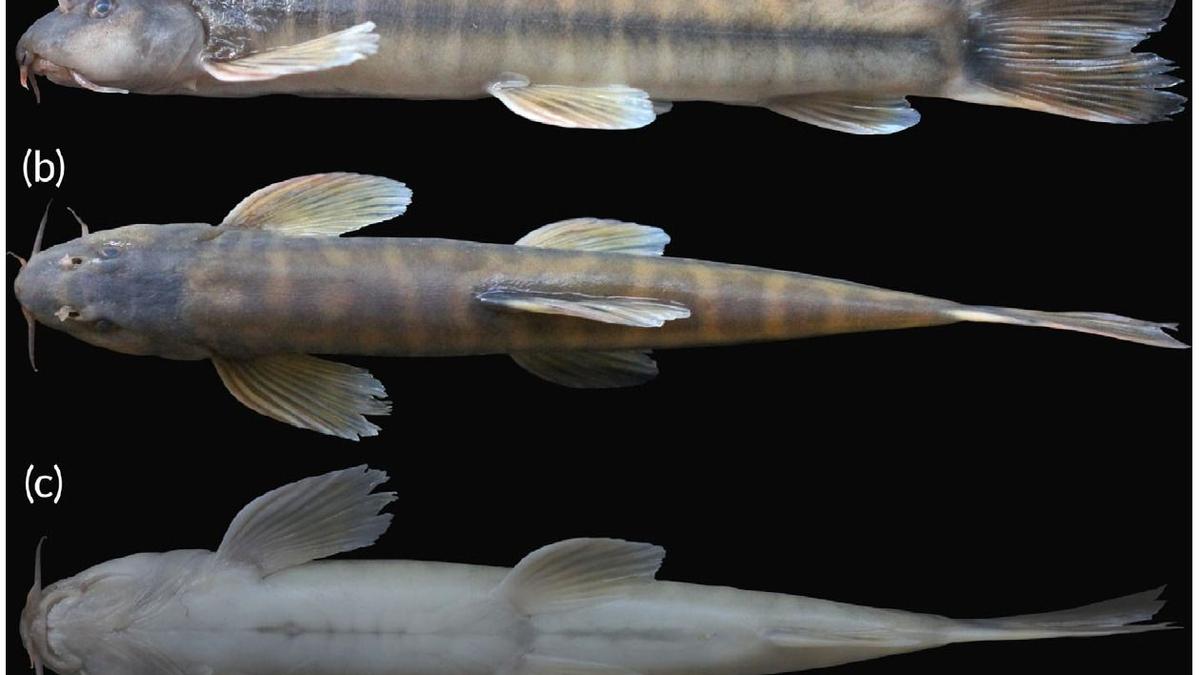
- 26 May 2025
In News:
A newly discovered species of cave-dwelling loach, Schistura densiclava, has been recorded from the Krem Mawjymbuin cave in the East Khasi Hills district of Meghalaya, India. This species becomes the sixth known cave-dwelling fish from the state, emphasizing Meghalaya’s rich subterranean biodiversity.
Taxonomy and Classification
- Family: Nemacheilidae (bottom-dwelling freshwater fishes)
- Type: Troglophile — adapted to live in caves but can survive and reproduce in surface (epigean) waters.
- Distinct Feature: Unlike typical cave fishes, S. densiclava retains pigmentation and functional eyes, indicating adaptability to both subterranean and overground aquatic environments.
Habitat and Environment
- Found 60 meters inside the Krem Mawjymbuin, a limestone cave with a surveyed length of 1.6 km and an altitude of 206 meters.
- The species inhabits a cool, fast-flowing stream with a temperature of 18°C and low oxygen levels.
- The cave is ecologically sensitive and was previously in the news due to a local ban on worship at a Shivalinga-like formation within it.
Morphological Characteristics
- Coloration: Pale yellow-green body with 14–20 greyish to faint black vertical bars.
- Named densiclava due to the thick dark stripe near the dorsal fin ("densiclava" = Latin for "thick stripe").
- Sexual Dimorphism:
- Males: Slimmer with irregular patterns and puffier cheeks.
- Females: Sturdier with more consistent markings.
Scientific Significance
- Genetic testing confirmed Schistura densiclava as a distinct and previously unrecorded species.
- Its endemic distribution, limited to a single cave system, marks it as a species of high conservation concern.
- The discovery was published in the Journal of Fish Biology by a team led by Kangkan Sarma from Gauhati University, along with other Indian ichthyologists.
